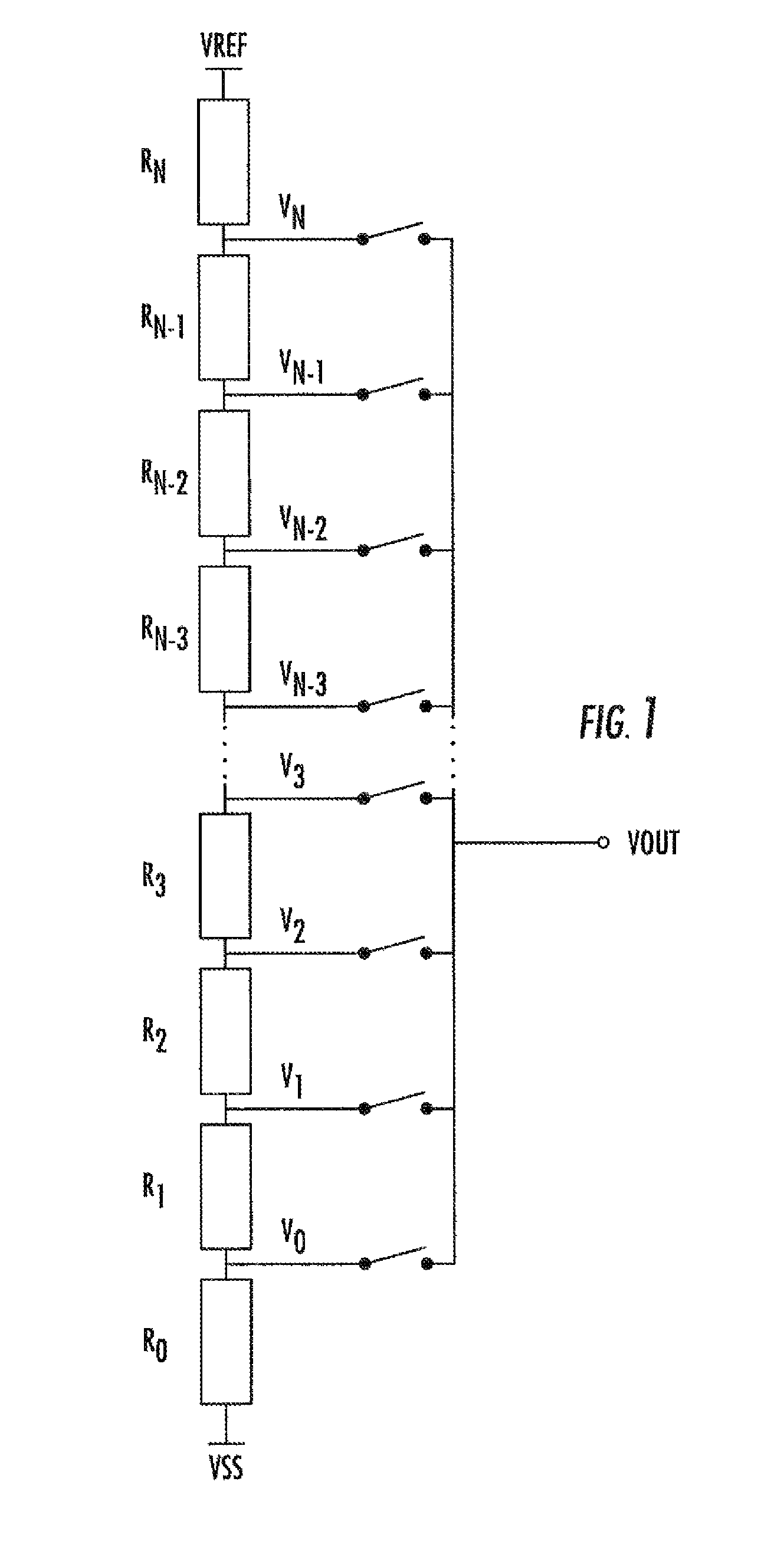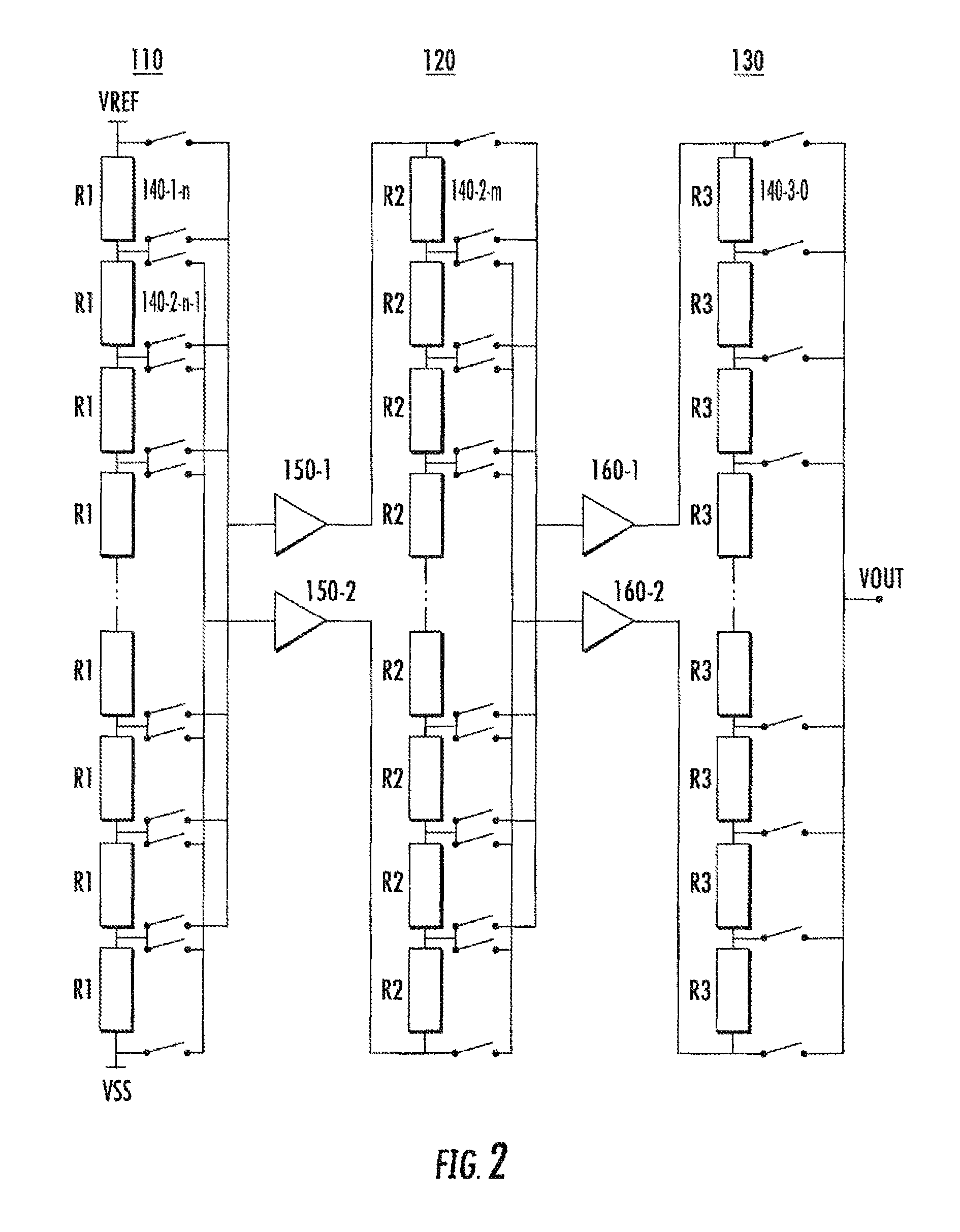Fine resistance adjustment for polysilicon
a technology of polysilicon and fine resistance, applied in the direction of digital-analog converters, instruments, transmission systems, etc., can solve the problems of difficult to achieve high-resolution dacs
- Summary
- Abstract
- Description
- Claims
- Application Information
AI Technical Summary
Benefits of technology
Problems solved by technology
Method used
Image
Examples
Embodiment Construction
[0023]FIG. 1 shows a simple R-string DAC architecture. In the shown implementation a number, N+1, of resistive circuit elements Ro, . . . , RN are placed in series. A set of structures provide N output voltage stops at nodes Vo, . . . , VN-1. The maximum achievable resolution is determined by the number of resistive elements in the string. However, the relative accuracy is limited by the maximum attainable accuracy in each of the resistances. The apparatus and methods described herein are used to allow for precision adjustments to the resistance values of each element. These adjustments can be determined during manufacture, at test phase, or in operation of the R-DAC in the field.
[0024]More particularly, it is not possible in practice to ensure that the resistance values of every resistive element Ro, . . . , RN are exactly equal. Random resistive component mismatching as caused by semiconductor process imperfections is unavoidable. However, polysilicon and diffusion type resistors ...
PUM
 Login to View More
Login to View More Abstract
Description
Claims
Application Information
 Login to View More
Login to View More - R&D
- Intellectual Property
- Life Sciences
- Materials
- Tech Scout
- Unparalleled Data Quality
- Higher Quality Content
- 60% Fewer Hallucinations
Browse by: Latest US Patents, China's latest patents, Technical Efficacy Thesaurus, Application Domain, Technology Topic, Popular Technical Reports.
© 2025 PatSnap. All rights reserved.Legal|Privacy policy|Modern Slavery Act Transparency Statement|Sitemap|About US| Contact US: help@patsnap.com



